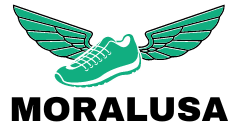What are Non Skid Shoes?
If you are seeking shoes that will provide you with dependable traction on the ground, then non skid shoes (also called non-slip or slip-resistant shoes) are your best bet. The major thing that sets these shoes apart from regular shoes is their firm grip on surfaces, even if the surface is greasy, oily, or wet. The Occupational Safety & Health Administration (OSHA) requires workers in several industries to wear non-slip shoes to check hazards, but the agency has not defined “non-slip”. Generally, suitable non-slip shoes are fitted with sturdy, anti-skid soles, along with patterned tread for enhanced traction on wet, oily, or slippery surfaces.
How to tell if Shoes are Non-Skid
Selecting the appropriate non-slip shoes can considerably reduce your risk of slips and falls. This is especially true if you work in an environment with slippery surfaces like a hospital. So what can you do to find out if a shoe is slip-resistant or not? Below are a few tips on how to ascertain whether you are purchasing non-skid shoes.
See also: How to tell if Shoes are Non-Slip?
What does the maker Say?
Most shoe manufacturers will specify whether their shoes are slip-resistant or not. Therefore, read the labels to find out whether it is indicated. Many non-slip models will state that the outsole is ASTM F1677 certified. This means the shoes have been examined for performance on various dry, wet, and oily surfaces.
If you are not certain about this, you can always ask the shop attendant. However, if you are buying a pair over the internet, you can read the description. Even so, take what you find with a grain of salt because marketers tend to hype their products.
Thus, when your order arrives, test them out to determine if they are truly slip-resistance. You can return the shoes for a replacement or a refund if you discover that they are not non-slip.
Look at the outsole’s shape
With regular flat edge soles, liquids can get trapped beneath the shoe, which can cause slips and falls. Soles that are somewhat curved at the edges help prevent water from being trapped underneath.
Examine the tread
Non-skid shoes typically come with good tread patterns on the underside of the outsole. The treads can have various shapes like hexagons, circles, or squiggles. These shapes help remove liquids from beneath the outsoles thus preventing slips and falls. Go for the ones with large amounts of small shapes as opposed to the ones with small amounts of large shapes.
Check the Outsole Material
The material employed in making the shoe’s outsole is also important concerning slip resistance. An outsole made using rubber often delivers better slip-resistance when walking on wet, greasy, or oily surfaces. That is why it is highly recommended you select shoes with outsoles made using soft rubber.
Look for Grooves on the outsole
The grooves on the sole of your shoe help increase friction between the sole of your shoe and the floor surface you are walking on. This in turn helps reduce the likelihood of slips, trips, and falls on hazardous surfaces. Thus, when shopping for non-skid shoes, go for the ones that have grooves etched on the outsoles.
Test the shoes
Wear the shoes and walk across a floor covered with soapy water or oil. Check to see if the shoes provide a good grip on the ground.
See Also: Best Slip-on Shoes for Nurses
Tips for Buying Non-skid shoes Online
When buying non-skid shoes over the internet, there is no way to manually test out the shoes. This makes the task of selecting the right one a little more challenging. The following tips can help.
Read reviews
Reading reviews of previous buyers and asking questions is a great way to find out if a shoe functioned well in wet/slippery circumstances. If there are lots of negative reviews, that pair may not provide the slip resistance you require.
Scrutinize the outsole by zooming in on it.
As you scrutinize the outsole, look out for the various traits that will make the footwear non-skid. Check to see whether the outsole is made of rubber and whether there are grooves and tread patterns on it.
Protective shoes are essential for averting debilitating injuries like torn muscles, sprains, strains, fractures, and dislocations. A reliable non-skid shoe can help lessen your danger of falling when walking on a wet, oily, or greasy surface. Nevertheless, finding the ideal non-slip footwear can take a little searching.
